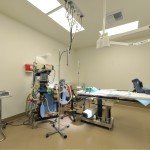About
Success
Treatment
Financial
Resources
Blog
Contact
Site Tools

Intended Parents: Everything You Should Know About Timed Intercourse
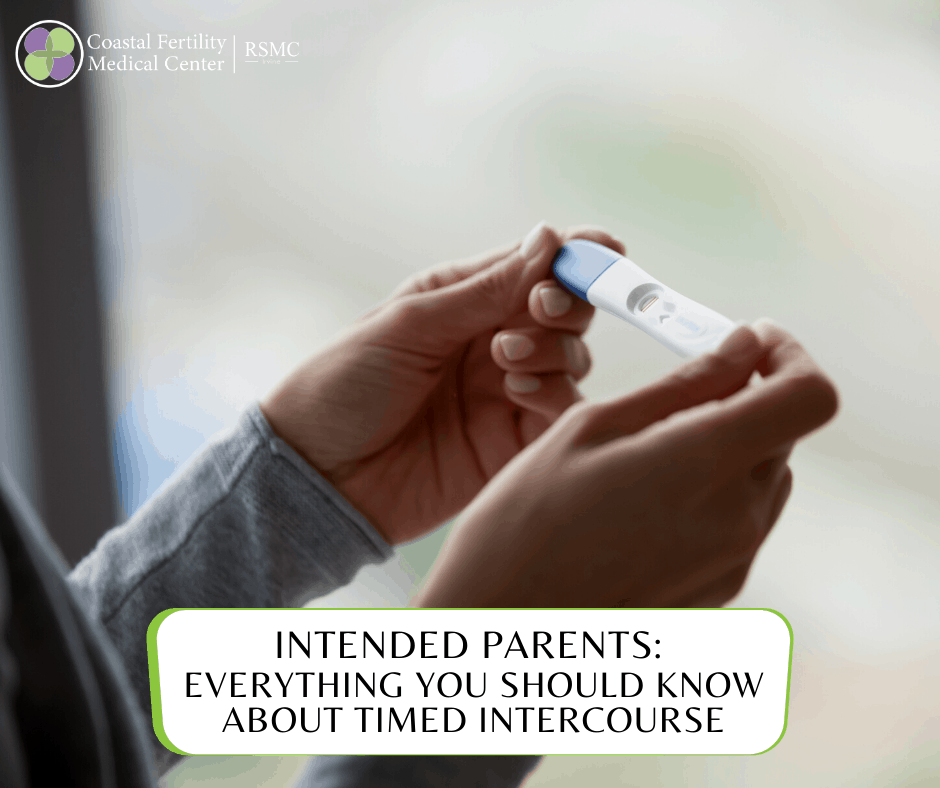
If you have been trying to conceive naturally, chances are that you already know about timing sexual intercourse around the fertile period of your menstrual cycle. There’s a small window of time every month when a woman can conceive and ovulation tests can help pinpoint that time.
However, most women often wonder:
- how to utilize the information provided by ovulation tests and
- how long after a positive ovulation test they remain fertile
The answer to the second question is – not long. Your eggs are only viable for nearly 24 hours after being released from the ovaries. Combining this timeframe with the 36 hours window between a positive ovulation test and actual ovulation, you only have about 60 hours or 2 and a half days (that too is varied) during your cycle when pregnancy chances are highest.
The answer to the first question is timed intercourse cycle – a good way to optimize that small fertile window using medication to encourage egg production in ovaries, promote ovulation, and raise the odds of getting pregnant on your own. Moreover, this process involves little intervention from reproductive experts.
What is Timed Intercourse ?
As we have discussed, timed intercourse is a treatment option that involves the timing of sex within the fertility window or the period where you have the best chances of becoming pregnant. And it yields a high chance of success when done correctly.
Fertility Window
Let us discuss the fertile window since it’s important to know yours to improve your chances of getting pregnant. A woman is likely to conceive around 5 days prior to ovulation until a day after ovulation has taken place. If sperm comes close to an egg within this period, there is a possibility of becoming pregnant.
While eggs can only live for around 12 to 24 hours after ovulation, sperm can survive for up to 5 days in the cervix in the presence of cervical mucus. This mucus is secreted in the cervix due to increasing estrogen levels as ovulation approaches. Since sperm can live for a longer time, you have the best chances of conceiving within this 6-day window. Hence, having sexual intercourse multiple times during this period increases your odds of pregnancy.
Fertility experts recommend that young women with a 28-day menstrual cycle have a lot of sex around day 12 to 14 of their cycle.
Who would benefit
Ideal candidates for a timed intercourse cycle include women who have irregular or absent menstruation or those with hormonal disorders during their menstrual cycle, which usually results in spotting or infertility.
How Timed Intercourse helps achieve Pregnancy
Timing of sexual intercourse can significantly increase your chances of conception as long as you have no problems with your fallopian tubes and womb and your partner is not dealing with any male infertility issues. Below are some data on the chances of getting pregnant:
- A woman has a 42% (maximum) chance of conception on the day preceding ovulation, which is the most fertile day of her menstrual cycle.
- 68% of women between the ages of 20 and 44 will become pregnant within 3 months of actively trying to conceive, and 92% will achieve pregnancy with one year of trying.
- 45% of women aged 25 or below will get pregnant within a cycle, whereas 20% of women who are 35 years or above will conceive within a cycle.
One of the best things you can do to improve your fertility chances is to track your period and time sex around ovulation. After all, you have no chances of conceiving if you are not having intercourse during your fertile period. Since the probability of getting pregnant is higher in the five days prior to ovulation and highest on the day preceding ovulation, you need to be having sexual intercourse within this period if you are trying to become pregnant.
Although some sources recommend having sex every other day within the fertility window, there are no empirical studies indicating the optimal frequency for sexual intercourse. But it seems the more frequently you have sex, the better.
Timing sex within the fertile window is relatively simple and less expensive than other treatment options for infertility, like IVF (intrauterine fertilization), IUI (intrauterine insemination), etc. Hence, it will be good to complete a timed intercourse cycle before proceeding to these costlier options.
Getting the timing right
A lot of women find it difficult to know when they are in their fertility period. According to fertility experts, it’s best to start having sex on day 10 of your menstrual cycle and doing it every other day until ovulation and a day following ovulation. Day 10 is a good point to start because estrogen levels are usually high on this day, and the womb lining (endometrium) should be growing very thick.
Tracking your ovulation gives a clear picture of your fertile window. Fortunately, there are ovulation predictor kits that can be used to check for an increase in luteinizing hormone (LH) in the urine. The levels of this hormone usually increase 24 to 48 hours prior to ovulation.
It is recommended that you do the tests in the morning and continue doing them for a day or two after you have gotten a positive result to ensure whether the positive disappears or turns negative again in order to know that the tests are really capturing your luteinizing hormone levels.
Progesterone tests can be helpful too
At times, it is good to have progesterone tests performed on day 21 to be sure that ovulation has actually taken place. If the levels of progesterone are found to be low, it suggests that did not occur.
Basal body temperature can be an indicator as well
Another method that can be used to track ovulation is through your basal body temperature. The belief is that the resting body temperature increases shortly after ovulation. You have the best chances of conceiving 2-3 days before this little increase in temperature. However, it is often used in conjunction with other tracking methods, such as monitoring changes in the cervical mucus) since it is impossible to know you are ovulating until that increase in temperature happens.
This is why reproductive experts do not recommend relying on the BBT method alone for tracking ovulation.
Know your Ovulation predictor kit (OPK)
But note that all ovulation tests are not the same. While some will show two blue lines or a smiley face when your luteinizing hormone (LH) peaks, others may provide a numerical value of your LH level. This allows you to know whether this hormone is low, high, or at its peak as you approach your LH surge and the two days when you are most fertile.
Important note: ovulation tests that provide a positive or negative result do not work for 10% of people whose ovaries have abnormal levels of luteinizing hormone.
Tests are Required before Commencing
Before commencing any treatment, your doctor will carry out several tests to evaluate your fertility. For women, this may include several blood tests and an ultrasound to check ovarian function, egg supply, and the shape of the female reproductive organs.
The male partner will have to undergo a physical evaluation followed by the analysis of the semen for sperm count, motility, concentration, and shape (morphology) to check for male infertility conditions.
Below are the steps you can expect to take on a timed intercourse cycle. Since treatment is customized for each patient, not all patients will follow these exact steps. We recommend consulting your healthcare providers as they will help make unique decisions to raise your own chances of having a successful cycle.
How Timed Intercourse Works
1. Period begins
Once your menses start and you have bleeding (not spotting), note down the date and inform your doctor. But if you are one of those women who don’t menstruate, there are progesterone medications like Provera that you can take to induce a period.
When using ovarian stimulation medication like Clomid, it is important to write down the first day you experience a full flow because this date will be used to determine when you are to take your medication.
2. Ultrasound baseline
After this, your doctor will do a transvaginal ultrasound to assess your ovaries. If there are huge cysts in the ovaries, the cycle will most likely be canceled. However, your cycle won’t be canceled if you only small cysts like those in women with PCOS (polycystic ovary syndrome).
3. Medication starts
Medication is taken to improve hormone production, and it encourages the ovaries to develop mature eggs that will be released at ovulation. This can be in the form of a pill (like Clomid) or an injection.
Typically, oral medication is used for a period of 5 days, whereas injectable medication is normally taken for around 8 to 12 days, depending on how your ovaries respond. Your physician will design a personalized medication schedule just for you. While some women like to take oral medication in the morning, others prefer to take it at bedtime to sleep through the possible side effects.
4. Monitoring the ovaries
To ensure correct timing of each step of the cycle, blood tests and ultrasounds will be carried out every 2-3 days to evaluate follicle growth and make sure everything is going well. This will enable the doctor to know the number of eggs that are developing.
If there is a chance of releasing an excess number of eggs, the cycle may be ended. This is done to prevent a pregnancy with multiples, which has a high risk for compilation and achieve a singleton pregnancy.
Depending on your egg development, your doctor also monitors the ovaries to determine the best time to give you a trigger shot.
5. Trigger shot
A trigger shot is given when the egg reaches optimal development, inducing ovulation within 36 to 42 hours. It contains human chorionic gonadotropin (HCG), a fertility hormone that causes the follicles to burst and release an egg or eggs.
6. Timed intercourse
After the trigger shot has been administered, the couples are advised to have sex every day or every other day for 3 days in the comfort of their home.
7. Progesterone testing
Approximately a week after timed intercourse, a blood test will be done to check progesterone levels to know if the trigger shot induced ovulation. If your progesterone levels are very low, your physician will recommend daily supplemental progesterone, which may be taken orally or through the vagina. Progesterone helps the womb lining grow thicker and promotes the implantation of the embryo in the womb.
8. Pregnancy test
Exactly 2 weeks after ovulation, a blood test is performed to know if the woman is pregnant. Remember that pregnancy tests that are done earlier than two weeks may produce a false positive because of the hormone administered via the trigger shot.
What if the cycle failed?
It will be good to consult your obstetrician/gynecologist or fertility expert if you are
- In your twenties or early thirties and have been unable to conceive after one year of trying
- Above 30 and have been trying for 6 months
- Suffering from a health condition, like PCOS or endometriosis.
Coastal Fertility Medical Center has helped countless couples struggling with infertility as well as secondary infertility to conceive and have babies of their own. If you have more questions about pregnancy, simply note them down and ask our fertility specialists during your consultation.
Related Post
-
What is Azoospermia – Types, Causes, Symptoms, and Treatments
-
15 Things Doctors Want Women in Their 30s to Know About Their Fertility
-
Ovarian Hyperstimulation Syndrome (OHSS) – Causes, Risks, and Treatments
-
This IVF Pregnancy Success Video Is Going Viral On TikTok, And It’s The Most Adorable Announcement
-
End your week with these happy and heartwarming stories and videos
-
Fertility clinic shares IVF pregnancy success with parents-to-be in adorable video
Halloween 2019
Each year, Coastal Fertility Medical Center’s staff hosts a fun get together for our former patients and their families. View more photos from our 28th annual Miracle Babies Halloween event!Popular Searches
- Orange County Fertility Clinic
- Irvine, California Fertility Center
- Coastal Fertility Medical Center
- Free Fertility Seminar, Irvine CA
- In Vitro Fertilization and ICSI
- Best Orange County Infertility Doctor
- Southern California Fertility Specialist
- PGD, PGS Orange County
- Egg Donation and Surrogacy
Address
Coastal Fertility Medical Center15500 Sand Canyon Avenue
Suite 100
Irvine, CA 92618
©2024 | Sitemap | HIPAA/Privacy | Disclaimer and Privacy Policy
News from our Top Doctors

Our fertility clinic focuses on helping you build your family regardless of your sexual orientation or the gender you choose to identify with. We are even taking further steps to make LGTB people feel more welcome at our fertility clinic. Each of our patient-facing staff goes through LGTB training to let family-building clinicians provide necessary support and make you feel highly welcome.

Coastal Fertility Medical Center offers one of the most advanced fertility treatments and is completely transparent regarding the costs of procedures and any other expenses that you may have to pay before commencing your treatment. This differentiates us from some fertility clinics that reduce prices before the signing of the contract but charge you extra later on. We make sure our patients are well aware of any possible extra pricing that may occur over the course of their treatment.

The infertility industry is currently segmented, with each service or treatment being handled by a different provider. Our all-inclusive model simplifies an otherwise complex and difficult process. We are here to revolutionize the infertility industry by offering a one-stop-service model to assist our patients through infertility challenges while reducing physical, emotional, and financial risks.

Our globally respected team of specialists are helping improve IVF technologies to enter into a generation of better outcomes for infertility. Although you’ll have a doctor guiding you, you are also going to benefit from the experience and insights of other doctors during case review collaboration meetings, which take place every week. So, you won’t just rely on the expertise of a specialist but benefit from the knowledge of many reputed fertility experts.

Our team specializes in difficult cases and help patients who may have been considered “hopeless” at other fertility clinics. Thanks to our personalized solutions, expertise, and internal collaboration, weare able to maximize pregnancy success rates that are well above the industry average, even in difficult infertility cases.

We know that every situation is different and that everyone requires different treatments. Unlike facilities that take “a one-size-fits-all” approach for all cases, our fertility specialists use more than 40 customized protocols to raise the chances of success. The customized approach even extends to our fertility laboratory. Our on-site lab director and his highly-experienced team nurture every embryo and egg to increase the odds of success of each cycle.
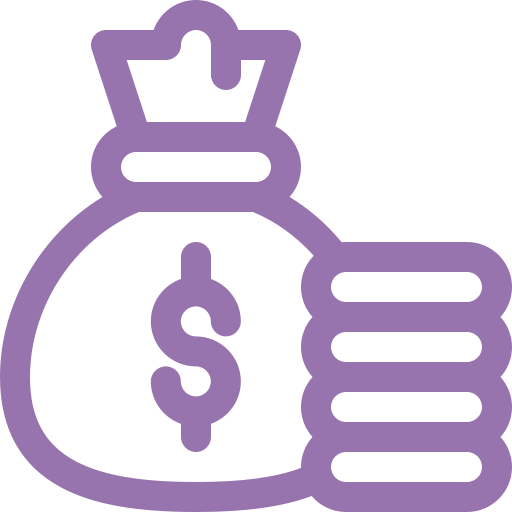
Coastal Fertility Medical Center offers one of the most advanced fertility treatments and is completely transparent regarding the costs of procedures and any other expenses that you may have to pay before commencing your treatment. This differentiates us from some fertility clinics that reduce prices before the signing of the contract but charge you extra later on. We make sure our patients are well aware of any possible extra pricing that may occur over the course of their treatment.
Thanks for Joining!
We will be sending new updates soon.
You’re all set!
Your new patient forms have been submitted and received. We look forward to seeing you at your appointment.
Send us a message, we’ll be happy to answer any questions!
Please complete the form so we can best serve and help you with your journey towards parenthood.
On Demand Seminar Registration
Following the Preimplantation Genetic Screening process, which helps ensure there are normal chromosome numbers and detects possible genetic disorders, the most healthy embryo(s) are selected to be implanted into your or your chosen surrogate’s womb. 2 weeks after the transfer of the embryo, your physician will conduct a final blood test to determine the level of hCG (human chorionic gonadotropin) in your body. Increased hCG levels usually indicate a positive pregnancy test.

For fertilization to take place, the collected egg and sperm are combined in a petri dish and cultured in an embryo incubator. This dish is closely watched to check whether any of the eggs have been fertilized. Once the egg is fertilized, it is referred to as an embryo or a blastocyst on the 5th day of development. Our in-house embryologist carefully nurtures every embryo to the right time, even if it means working outside the standard business operating hours. For instance: If an oocyte is not mature, our laboratory will wait for it to mature and then ICSI it at the right time.
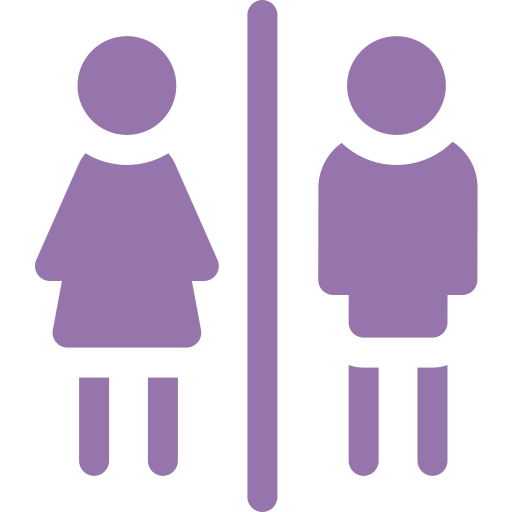
The egg retrieval is a slightly invasive medical procedure that takes about 20 to 30 minutes. You will be given an anesthetic to make you sleep for the duration of the procedure. Using ultrasound technology, your doctor will harvest your eggs transvaginally with a small, hollow needle connected to an ultrasound probe. Once your eggs are collected, your partner’s semen or donor sperm you have pre-selected is used for fertilization. The sperm are washed and prepared, and the top-quality sperm extracted is used to fertilize the eggs.

Your doctor will create a customized medication schedule that contains information about the fertility medications and hormone injections you have to take. Medication and injections are taken to encourage your ovaries to mature a large number of eggs for fertilization. Since women don’t respond to fertility drugs and hormones the same way, personalized protocols are crucial to the IVF cycle success. At Coastal Fertility, we will monitor you closely, letting you understand the changes occurring in your body and keeping track of how your egg follicles are growing.

On-site consultations typicallyinclude a standard fertility evaluation, consisting of a physical examination, complementary follicular ultrasound, and testing to enable your doctor to know your present fertility status and draw up a treatment plan.

This consultation includes a detailed medical evaluation with a doctor. You and your physician will review your health records and have enough time to talk about your goals and get answers to your questions. We recommend that you jot down all your questions before the visit to allow you to make the best use of the time spent with your doctor.

Your Reproductive Endocrinologist will take all factors into consideration and create a comprehensive plan of care, otherwise known as the treatment plan. This plan will include treatment recommendations from the physician and enable your financial coordinator to make a precise quotation once you meet.
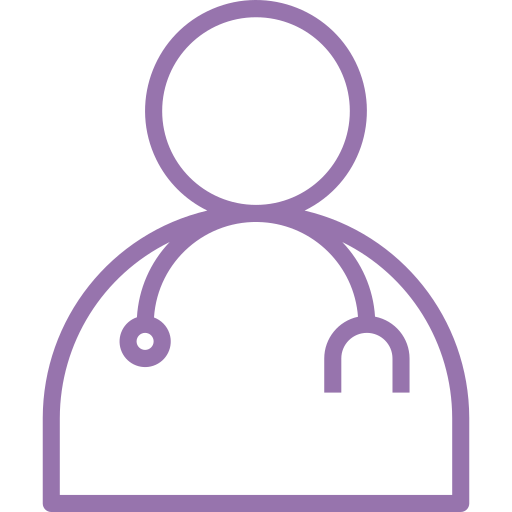
Our globally respected team of specialists are helping improve IVF technologies to enter into a generation of better outcomes for infertility. Although you’ll have a doctor guiding you, you are also going to benefit from the experience and insights of other doctors during case review collaboration meetings, which take place every week. So, you won’t just rely on the expertise of a specialist but benefit from the knowledge of many reputed fertility experts.

The infertility industry is currently segmented, with each service or treatment being handled by a different provider. Our all-inclusive model simplifies an otherwise complex and difficult process. We are here to revolutionize the infertility industry by offering a one-stop-service model to assist our patients through infertility challenges while reducing physical, emotional, and financial risks.

Our fertility clinic focuses on helping you build your family regardless of your sexual orientation or the gender you choose to identify with. We are even taking further steps to make LGTB people feel more welcome at our fertility clinic. Each of our patient-facing staff goes through LGTB training to let family-building clinicians provide necessary support and make you feel highly welcome.

We know that every situation is different and that everyone requires different treatments. Unlike facilities that take “a one-size-fits-all” approach for all cases, our fertility specialists use more than 40 customized protocols to raise the chances of success. The customized approach even extends to our fertility laboratory. Our on-site lab director and his highly-experienced team nurture every embryo and egg to increase the odds of success of each cycle.

Our team specializes in difficult cases and help patients who may have been considered “hopeless” at other fertility clinics. Thanks to our personalized solutions, expertise, and internal collaboration, weare able to maximize pregnancy success rates that are well above the industry average, even in difficult infertility cases.

Upon your arrival, you will check in with a Patient Care Coordinator. We will obtain your insurance information for benefits verification, a copy of your identification and take a picture for your electronic medical chart
Welcome to Coastal Fertility Family
Coastal Fertility is the leading provider of fertility solutions located in Orange County. Join us to get free updates on fertility news, treatments, infertility solutions and more.
Welcome to Coastal Fertility Family
Coastal Fertility is the leading provider of fertility solutions located in Orange County. Join us to get free updates on fertility news, treatments, infertility solutions and more.





